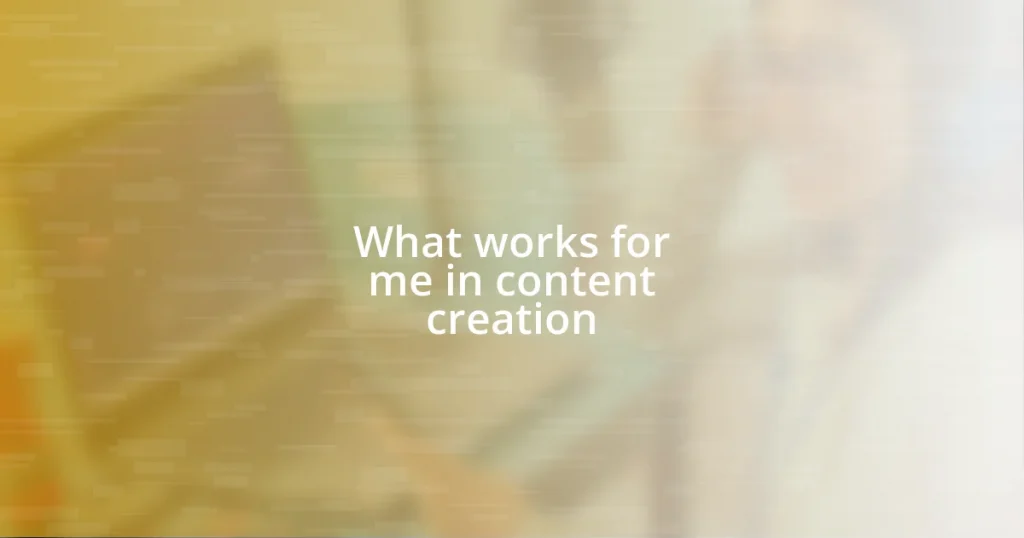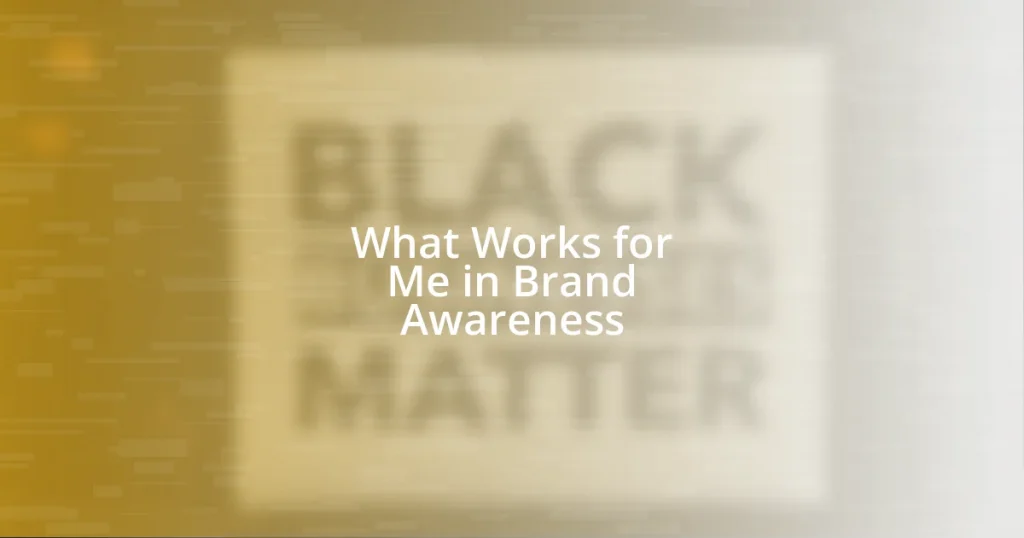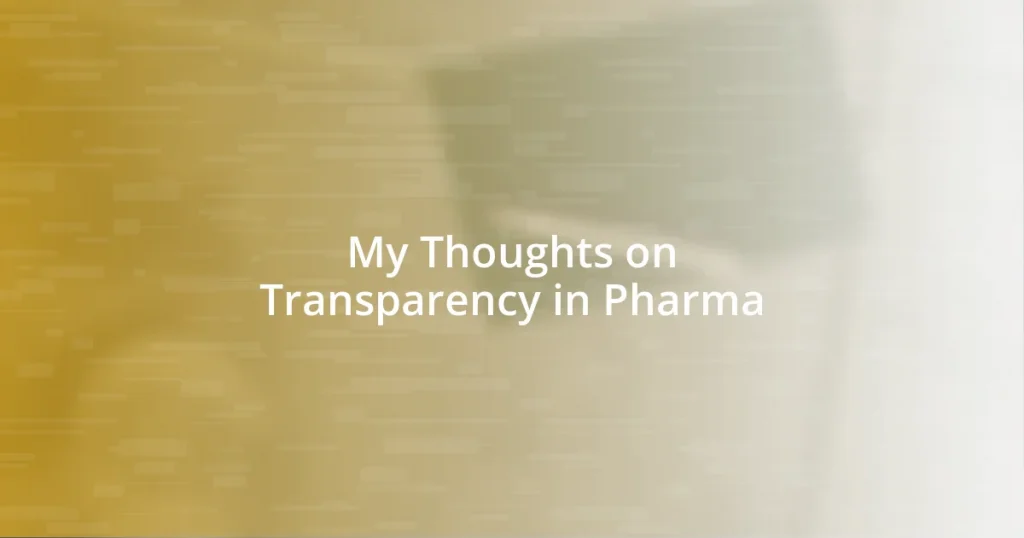Key takeaways:
- Establishing clear content goals is crucial for guiding creation and measuring success, ensuring content remains relevant and purposeful.
- Developing a dynamic content strategy involves identifying the target audience, choosing the right content formats, and regularly reviewing performance metrics.
- Diversifying content with multimedia and analyzing audience engagement helps refine approaches, enhances connection, and fosters ongoing innovation in content creation.
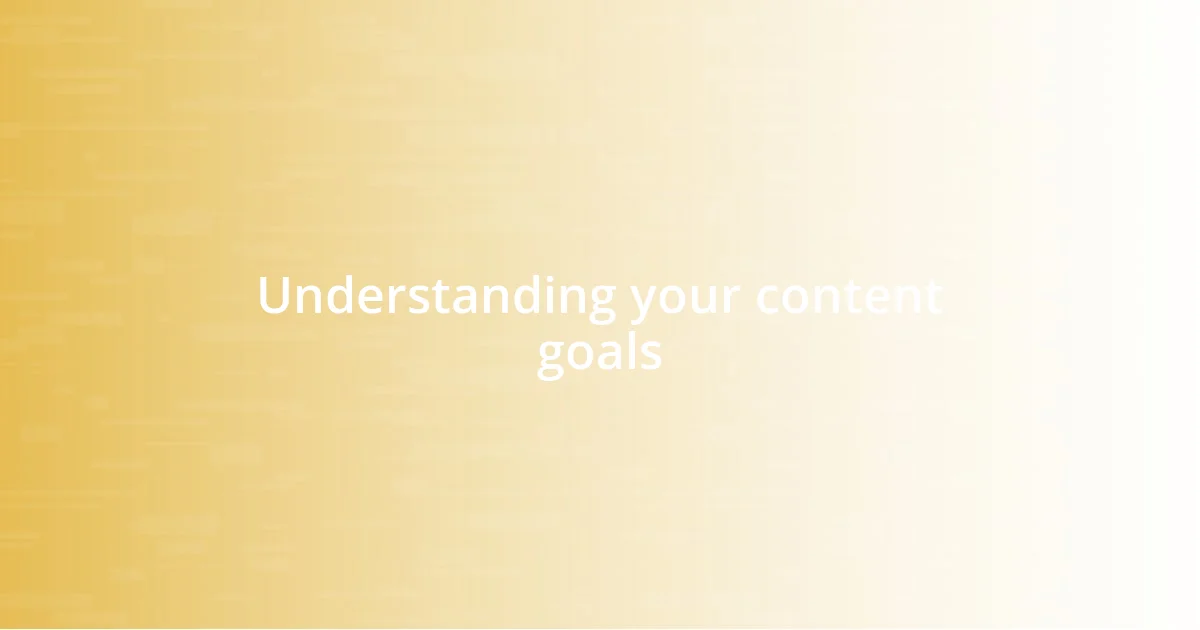
Understanding your content goals
When I first dive into content creation, I always start by asking myself, “What am I really trying to achieve?” Understanding your content goals is essential. Whether you want to build brand awareness, drive traffic, or engage with your audience on a deeper level, clearly defining these aims guides the entire creation process.
I remember a moment when I created a piece just for the sake of writing, without a clear goal in mind. The result? It flopped. I learned that without purpose, content can feel scattered and uninspiring. Establishing specific goals gives structure to my ideas and allows me to measure success; it almost feels like having a roadmap in a city I’ve never been to before.
It’s fascinating how our goals can shift as our understanding of the audience deepens. Have you noticed how your intent changes when you receive feedback? Embracing this evolution allows for more authentic connections. By regularly revisiting your objectives, you ensure that your content remains relevant, purposeful, and aligned with your audience’s needs.
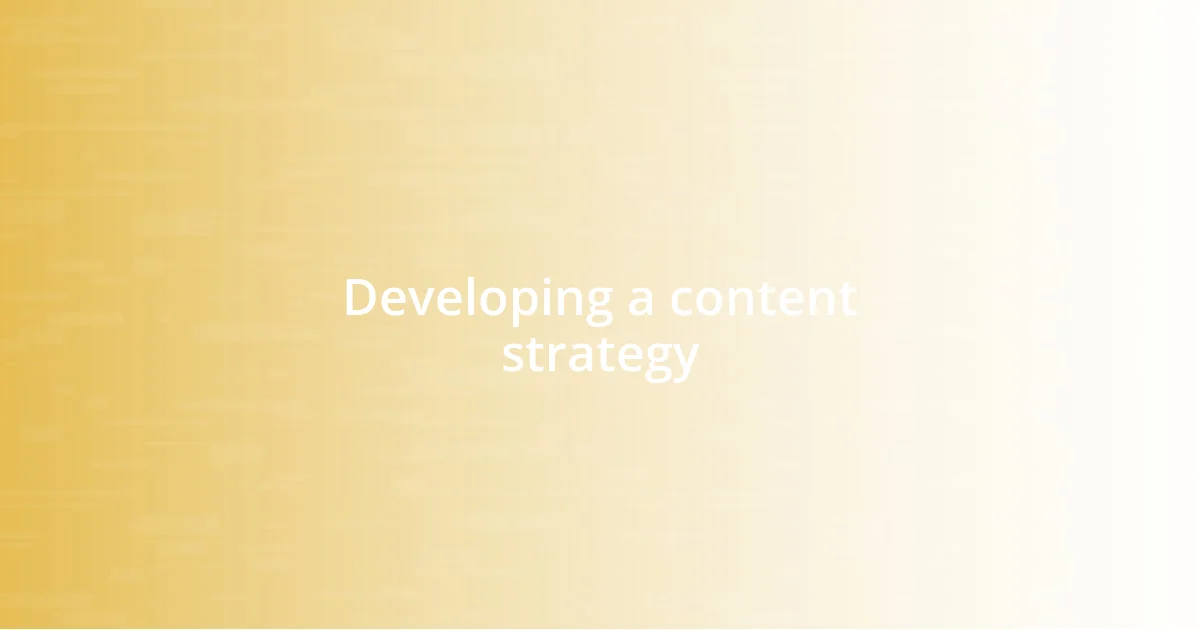
Developing a content strategy
When I think about developing a content strategy, I realize that it’s more than just a plan; it’s a dynamic process. I’ve found that starting with a clear content calendar helps me stay organized and focused on my goals. It’s like having a playlist for a road trip; I know what song comes next, making the journey much more enjoyable.
Here’s a quick checklist that I find useful to refine my strategy:
- Identify Target Audience: Who am I creating content for? Understanding their interests is key.
- Content Types: What formats resonate? Blogs, videos, infographics—each serves a different purpose.
- Distribution Channels: Where will I share my content to maximize reach? Social media, email, or maybe both?
- Consistent Review: Regularly revisit and adjust my strategy based on analytics and audience feedback.
- Set Milestones: I like to define success metrics for each piece, ensuring I track my progress effectively.
There was a time when I overlooked the importance of reviewing my strategy. I shared a post that, to my surprise, didn’t engage the way I anticipated. Reflecting on the insights gathered, I realized my audience had shifted. Adapting based on their evolving needs rejuvenated my strategy and reignited my passion for creating content that truly resonates.
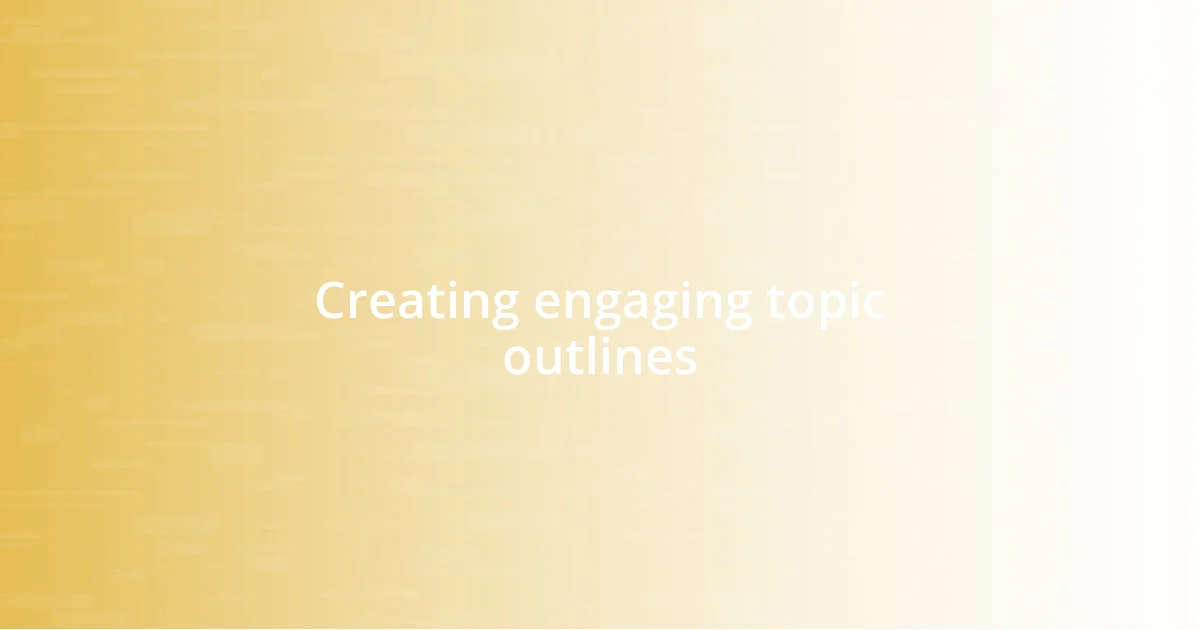
Creating engaging topic outlines
When it comes to creating engaging topic outlines, I’ve learned that the process is incredibly vital. Taking the time to brainstorm key ideas and organizing them logically transforms a vague concept into a clear direction. I often find myself jotting down keywords or phrases that resonate with me, which helps me see the big picture unfold. It’s like putting together a puzzle; every piece matters, and they all contribute to the final image.
I’ve also discovered that engaging outlines don’t just consist of headings; they should include intriguing questions or prompts. For instance, I frequently ask myself, “What would my audience love to learn?” This simple question sparks creativity, and it makes my outlines feel more dynamic. I remember crafting one outline that resonated so well with my audience; it started with a strong question, and the response was overwhelming. That moment taught me how questions can drive engagement and set the tone for a captivating narrative.
Lastly, I always try to keep flexibility in my outlines. Sometimes, as I dive deeper into research or reader feedback, new ideas surface that deserve a spot in the final product. I once had an outline that I thought was perfect until a reader’s comment inspired me to add a whole new section. Revising became an essential part of my creative journey, making the content not just better but more aligned with my audience’s needs.
| Tip | Benefit |
|---|---|
| Brainstorm Keywords | Helps clarify ideas and structure |
| Incorporate Questions | Enhances engagement and drives curiosity |
| Maintain Flexibility | Allows for spontaneous ideas and audience adaptation |
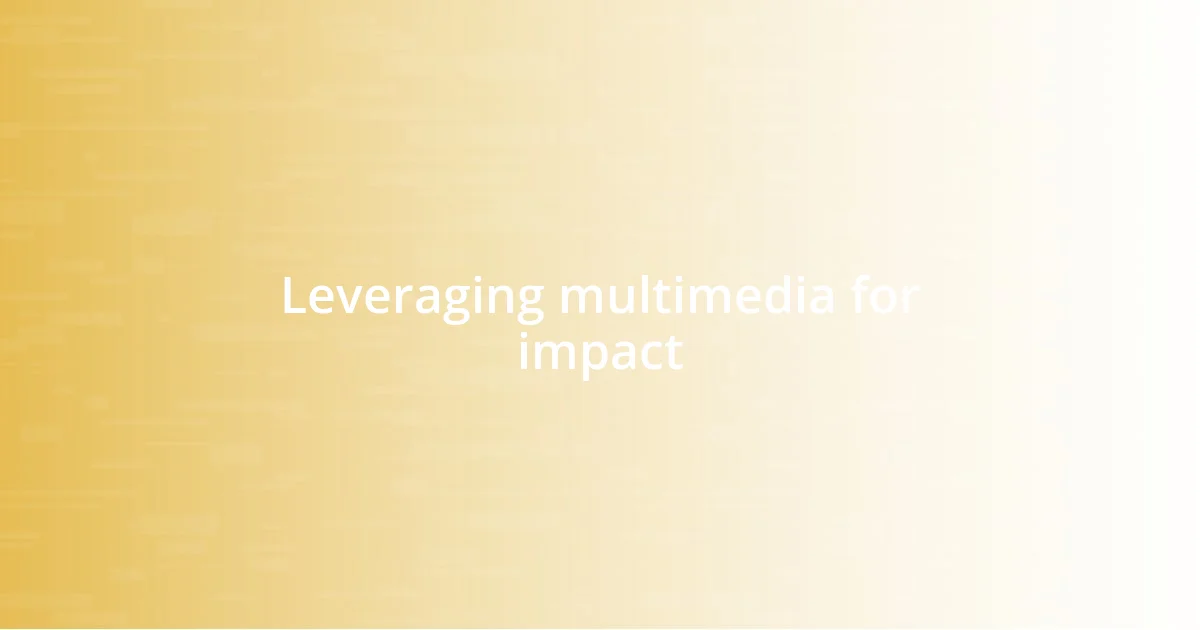
Leveraging multimedia for impact
When I think about leveraging multimedia, I can’t help but recall how a single video I created transformed the way my audience interacts with my content. Incorporating visuals, audio, and text not only made my message clearer but also ignited a deeper emotional connection. It’s fascinating how a well-placed infographic can take complex information and present it in a way that feels approachable and engaging.
I’ve found that using various multimedia formats, like podcasts or interactive content, opens up new avenues for audience engagement. For example, I once experimented with a simple audio clip that shared my thoughts on a trending topic. Surprisingly, the response was overwhelmingly positive; people appreciated having the option to listen during their commutes. This experience taught me that diversifying my content can cater to different audience preferences, significantly enhancing the impact.
I often ask myself, “What’s the best way to convey this idea?” This question drives me to explore multimedia options, guiding my creativity. I have learned that blending different mediums creates a richer experience for my audience. Sending out a newsletter that combines compelling visuals and captivating narratives left me awestruck by the feedback. It became clear to me that multimedia isn’t just a tool; it’s an essential part of making my content resonate and stick in the minds of my audience.
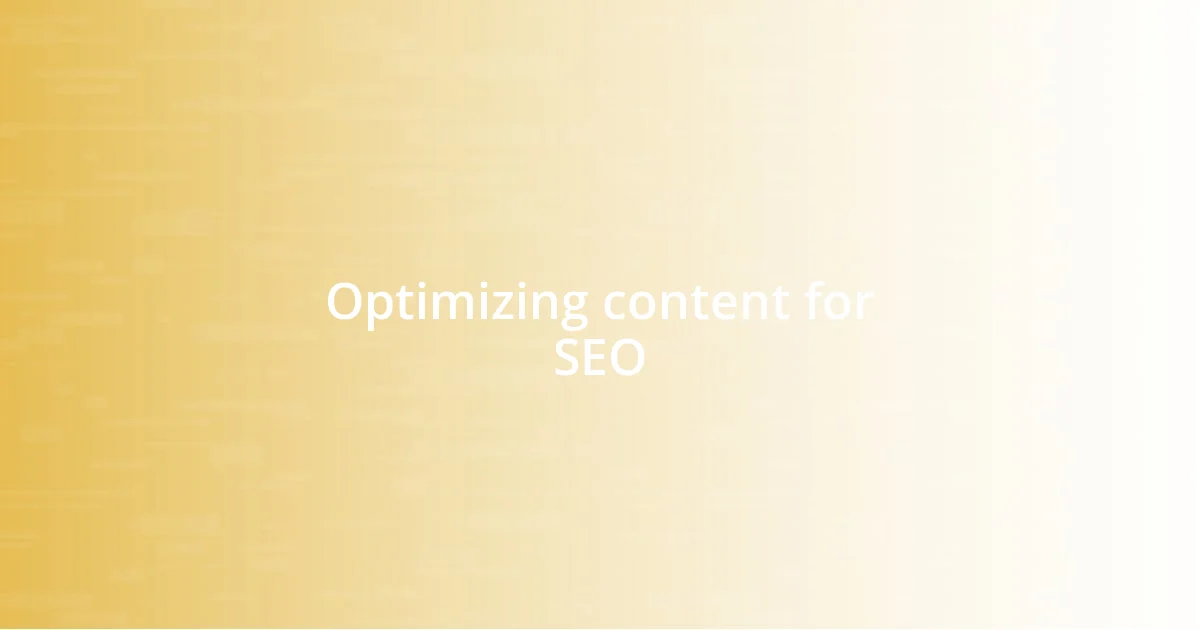
Optimizing content for SEO
Optimizing content for SEO has been a game changer for me in terms of visibility and engagement. I remember when I first learned about keyword density and how incorporating relevant keywords seamlessly into my content made a tangible difference in search rankings. It felt like unlocking a secret door to a larger audience; suddenly, the work I poured my heart into was finding its way to the people who truly needed it.
One particular experience stands out: after optimizing my blog post with targeted long-tail keywords, I saw a spike in organic traffic the very next week. I had chosen phrases that were specific and often searched, yet they flowed naturally within my writing. It was a thrilling moment—realizing that SEO is not just about algorithms but also about connecting with readers’ needs. I always remind myself that it’s essential to write for both search engines and my audience.
Moreover, I learned the value of meta descriptions. Initially, I viewed them as an afterthought, but now I carefully craft them to entice clicks. I’ve discovered that a compelling meta description serves as a mini-advertisement for my content. When I integrated this practice, I noticed that my click-through rates improved significantly. So, I ask you—are you spending enough time on those brief moments of persuasion? In my experience, they’re worth the effort.
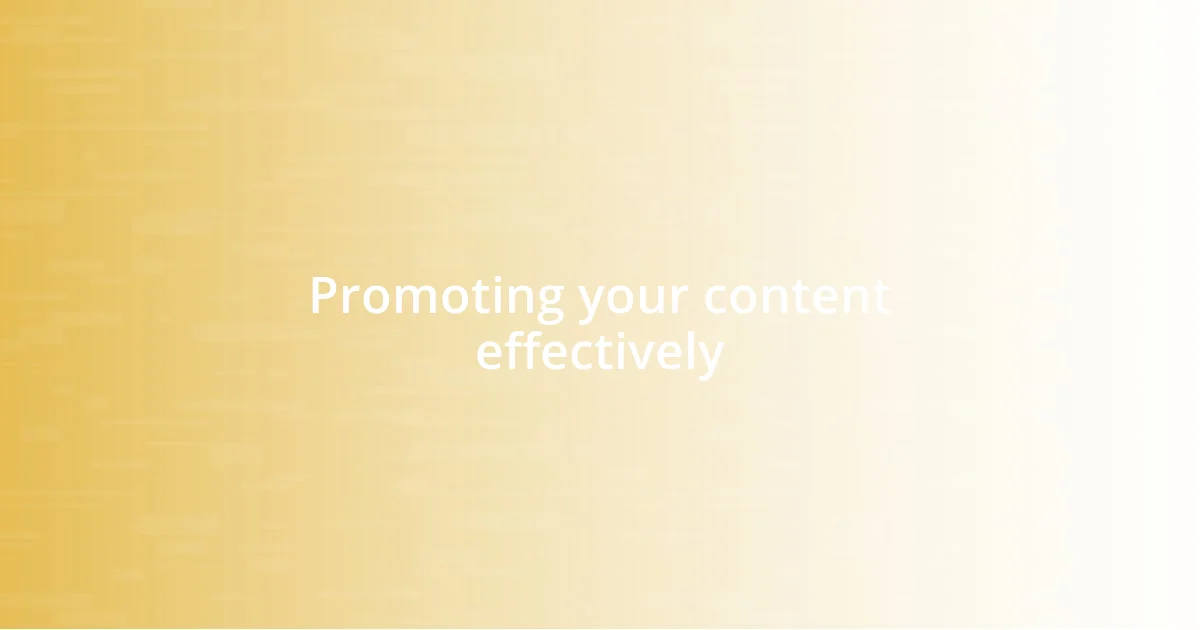
Promoting your content effectively
When it comes to promoting my content effectively, I’ve learned that choosing the right platforms can make all the difference. I still remember the first time I shared a blog post on social media, and it felt exhilarating to see the engagement soar. Each platform attracts a different audience, so I constantly ponder, “Where will my content resonate the most?” For instance, posting tailored snippets on LinkedIn connected me with professionals who valued the insights I offered.
Networking also plays a crucial role in how I promote my work. I recall attending a virtual event where I met like-minded content creators. Sharing my projects in that space led to valuable collaborations and cross-promotions that enriched my audience’s experience and expanded my reach. It was an eye-opener to see how community engagement can amplify my efforts; it’s not just about promoting myself, but about supporting others too.
Email marketing has become one of my go-to strategies as well. I remember starting a newsletter, unsure if anyone would even sign up. But over time, I saw a devoted group forming around my content. By offering exclusive insights and helpful resources to my subscribers, I not only fostered loyalty but also created a platform for deeper engagement. Do you think your audience would appreciate a direct line of communication? I would argue that it cultivates a personal relationship, which significantly enhances how your content is received.
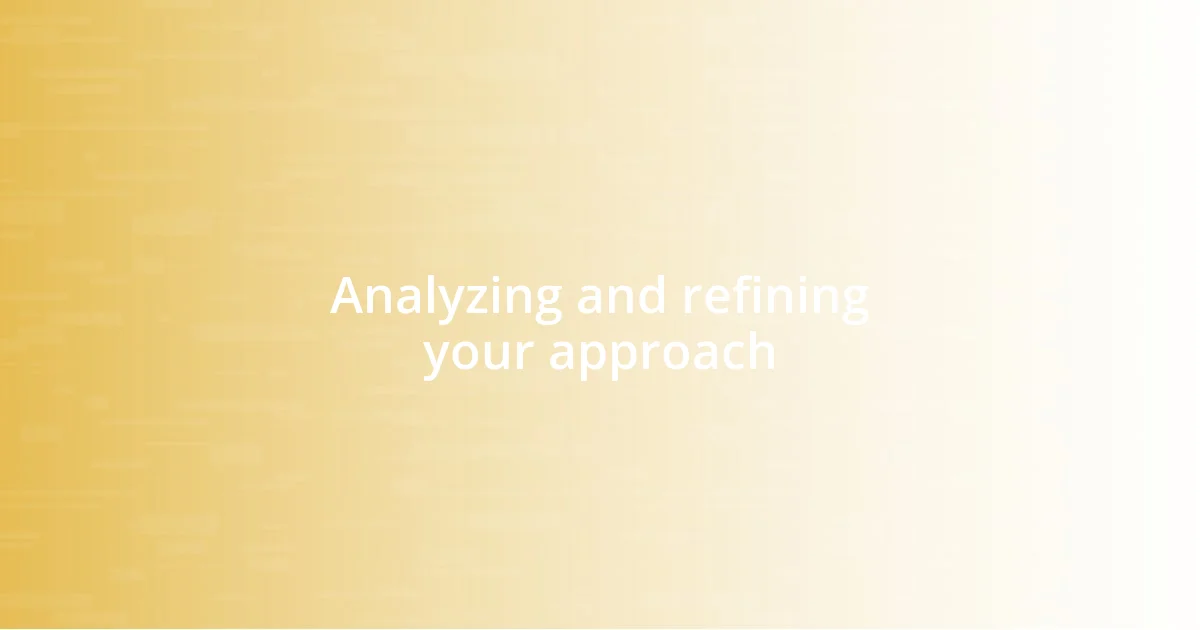
Analyzing and refining your approach
Refining my content creation approach has always been an evolving process for me. I remember a time when I would write and publish without much reflection afterward. It wasn’t until I began analyzing reader feedback and engagement metrics that I realized the importance of revisiting my work. Are you taking the time to look closely at how your audience interacts with your content? I find that this reflective practice not only improves future projects but also makes me feel more connected to my community.
Every so often, I conduct a deep dive into my past content, checking which pieces resonate the most. Surprisingly, I discovered that a simple how-to guide I wrote months ago still receives comments and shares. Looking back, it feels gratifying to see how that post has helped others—it’s a reminder that sometimes the simplest topics spark the most interest. Have you ever considered which of your works continues to hold value? This analysis has inspired me to create more content around similar themes while ensuring I continually innovate.
I also prioritize setting aside time for experimentation after reviewing my analytics. There was a phase when I tried various formats—a podcast episode here, a video there—and it was exhilarating! It helped me identify what truly engages my audience. Have you experimented with different formats to express your ideas? In my case, blending formats kept my content fresh and energized both me and my readers, leading to exciting new conversations and insights. Each experiment adds another layer to my approach, refining it to truly reflect what my audience craves.










